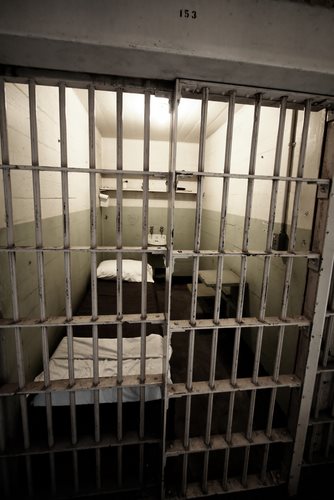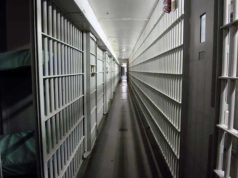
Inside Hernando County Jail: A Comprehensive Overview
Introduction
Hernando County Jail, located in Hernando County, Florida, plays a crucial role in the criminal justice system of the region. It serves as a temporary residence for individuals awaiting trial, those serving short sentences, and individuals who have been recently arrested. This article provides a detailed exploration of Hernando County Jail, shedding light on its history, facilities, inmate programs, challenges, and the broader context of incarceration in the United States.
Historical Overview
Hernando County Jail has a rich history that dates back to its establishment in the early 20th century. The jail’s initial construction was a modest and functional facility. Over the years, however, as the population of Hernando County grew, so did the demands on the jail. Consequently, the facility underwent several renovations and expansions to meet the evolving needs of the community.
The original Hernando County Jail, like many other correctional facilities of its time, had limited amenities and was primarily designed for confinement and security. In the late 20th century, the focus began to shift towards rehabilitation and reintegration, and this transformation continues to this day.
Facilities and Infrastructure
Hernando County Jail is a medium-sized detention center that can house approximately [insert capacity] inmates. It is equipped with various housing units, each designed to cater to different categories of inmates, such as general population, maximum-security, and special management units for high-risk offenders.
The jail features state-of-the-art security systems to ensure the safety of both staff and inmates. This includes surveillance cameras, electronic door control systems, and well-trained corrections officers who maintain a constant presence throughout the facility.
In addition to housing units, the jail includes administrative offices, medical facilities, visitation areas, a commissary for inmates, and educational spaces. The provision of these amenities reflects a broader shift towards incorporating rehabilitation and reentry programs into the correctional system.
Inmate Programs and Services
One of the significant changes in the philosophy of incarceration in recent years is the emphasis on rehabilitation. Hernando County Jail is no exception, offering a range of programs and services aimed at helping inmates address the underlying issues that contributed to their incarceration.
Some of the key inmate programs and services offered at Hernando County Jail include:
- Educational Programs: Inmates have access to educational opportunities, including GED programs, vocational training, and literacy courses. These programs help improve inmates’ chances of finding employment upon release.
- Substance Abuse Treatment: Recognizing the prevalence of substance abuse issues among the incarcerated population, the jail offers substance abuse counseling and treatment programs to help inmates overcome addiction.
- Mental Health Services: Many inmates struggle with mental health issues, and Hernando County Jail provides mental health assessments and counseling to address these challenges.
- Work Release Programs: Eligible inmates may participate in work release programs, allowing them to maintain employment while serving their sentences and reintegrate more smoothly into society upon release.
- Reentry Services: To reduce recidivism, the jail offers reentry services, including job placement assistance, housing resources, and access to social services.
- Religious and Spiritual Support: Inmates are allowed access to religious services and counseling, recognizing the importance of spirituality in the rehabilitation process for some individuals.
Challenges and Controversies
While Hernando County Jail strives to provide a safe and rehabilitative environment for its inmates, it is not without its share of challenges and controversies. Some of the issues that have drawn attention in recent years include:
- Overcrowding: Like many correctional facilities in the United States, Hernando County Jail faces issues of overcrowding, which can strain resources and limit the effectiveness of rehabilitation programs.
- Mental Health Crisis: The jail, like many others, has become a de facto mental health facility due to the lack of proper mental health services in the community. This presents unique challenges in terms of providing adequate care to mentally ill inmates.
- Staffing Shortages: Maintaining a well-staffed and trained corrections team is crucial for ensuring the safety and security of the facility. Staffing shortages can lead to safety concerns for both inmates and staff.
- Recidivism Rates: Despite efforts to provide rehabilitation programs, the recidivism rates in Hernando County and across the nation remain a concern. This raises questions about the effectiveness of these programs and the broader criminal justice system.
- Legal Issues: The jail, like any other, faces legal challenges related to inmate rights, conditions of confinement, and allegations of misconduct by staff.
The Broader Context
Hernando County Jail is just one piece of the larger puzzle that is the American criminal justice system. Understanding the broader context of incarceration in the United States is essential to appreciate the challenges and opportunities faced by facilities like Hernando County Jail.
The United States has one of the highest incarceration rates in the world, with millions of individuals in jails and prisons across the country. This has led to debates about the effectiveness of mass incarceration and the need for criminal justice reform. Initiatives aimed at reducing prison populations and addressing the root causes of criminal behavior have gained momentum in recent years, prompting changes in the way inmates are treated and rehabilitated.
The role of Hernando County Jail, therefore, extends beyond its immediate function as a detention center. It is a microcosm of the broader issues that plague the American criminal justice system, and its evolution reflects the ongoing efforts to strike a balance between punishment and rehabilitation.
Conclusion
Hernando County Jail serves as a vital component of the criminal justice system in Hernando County, Florida. While it has a rich history and a focus on providing rehabilitation and reentry programs to inmates, it also faces numerous challenges and controversies common to correctional facilities in the United States.
Understanding Hernando County Jail requires considering not only its facilities, programs, and challenges but also its place within the broader context of incarceration in the United States. As the nation continues to grapple with issues of mass incarceration and criminal justice reform, facilities like Hernando County Jail will play a critical role in shaping the future of the correctional system.
Hernando County Jail, or Hernando County Detention Center, is located in Brooksville, Florida, and can be located at 16425 Spring Hill Drive, or contacted at (352) 544-2334. The Hernando County Jail is administered by the Detention Division of Hernando County and is earmarked as the primary facility for jailing individuals arrested in Hernando County, either by the Hernando County Sheriff’s Office or by any law enforcement group allowed to function in the county.
The Hernando County Jail inmate population includes both men and women and has, in addition to adult prisoners, juveniles convicted for committing misdemeanors or felonies or waiting to be tried as adults. Among the legal statuses of Hernando County Jail prisoners, inmates can be those denied or without the ability to post bail, in the process of being sent from holding facilities elsewhere in order to be tried in Hernando County courts, or serving out sentences lasting under a year under the Hernando County Sheriff’s Office. The Hernando County Jail can hold up to 818 prisoners.
Friends and family of Hernando County Jail inmates must contact County Sheriff’s Office authorities in order to be granted permission for visits, and must do so at most a week before the desired visitation date, and at least 4 days preceding the visit, either by phoning or mailing in a completed Visitation Request Form. Visits can last for up to two hours and include as many as 3 visitors. Visitors can be turned away if found to be improperly dressed or if lacking government-issue photo ID.







